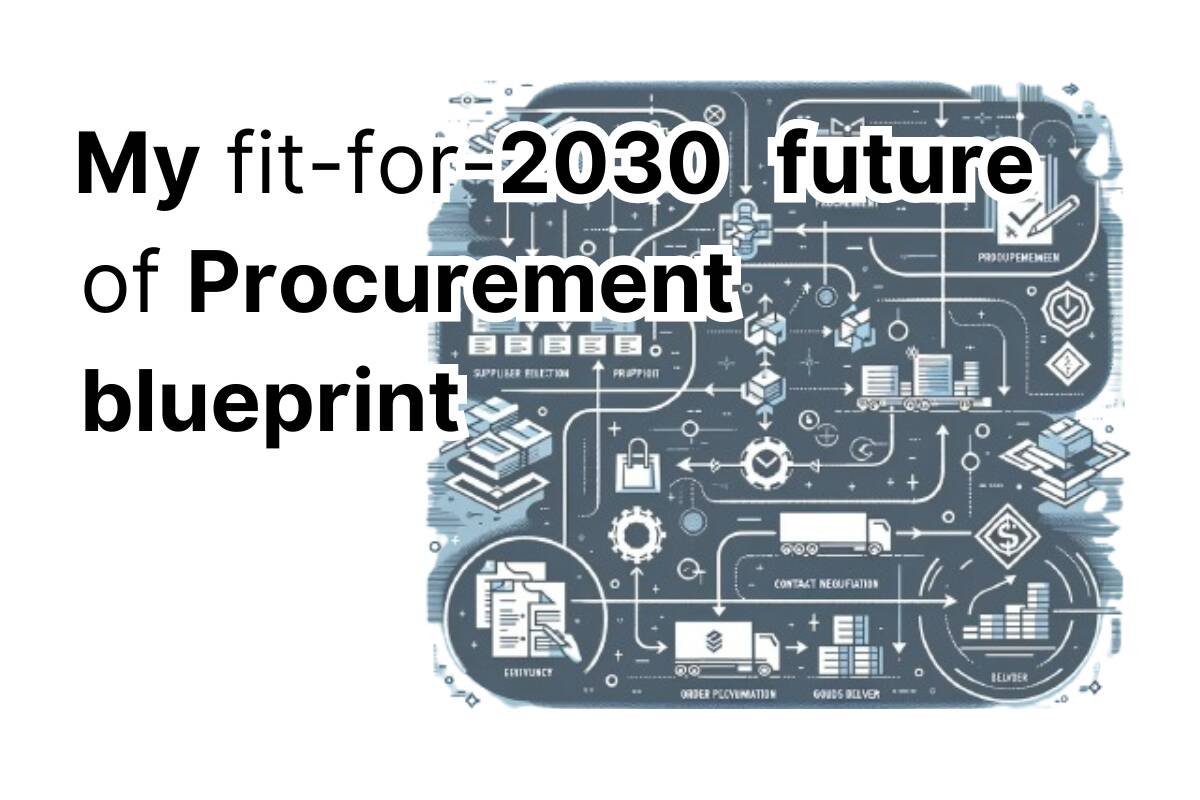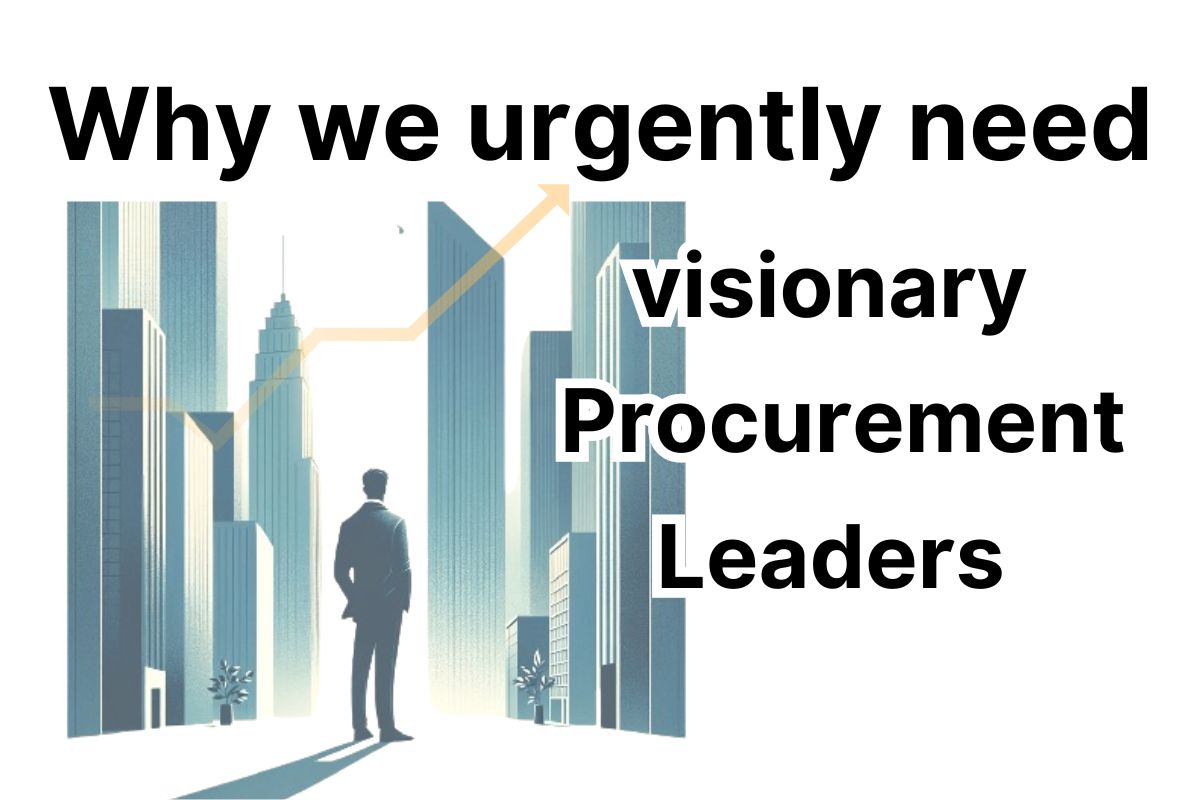Let’s be honest. Most experienced Procurement Managers don’t enjoy performing administrative tasks and firefighting operational issues.
And yet, poor operational efficiency in Procurement means that the typical Category Manager often spends at least a THIRD of their time performing “busy work”. This is not an effective or efficient use of their time.
If a third of their time is taken performing tactical or administrative activities , this time isn’t being spent on adding value to the business. Typically, the value that a procurement professional contributes to a business can usually be measured either in:
- Hard cost savings, or;
- Other, less tangible but equally important forms of value:
- Cost avoidance
- Reductions in energy or material consumption
- Supplier innovation
- Sustainability initiatives within the supply chain
- Third party risk management
- Contract lifecycle management
It’s therefore a fair assumption that if you remove these non-value added tasks, you will allow the Procurement Manager to deliver a third more value to the business. This happens through the freeing up of extra capacity, enabling them to perform their role more efficiently.
That’s a HUGE amount of untapped potential waiting to be unleashed.
How to improve operational efficiency in Procurement
If you’re responsible for leading a team of procurement professionals, then you should approach this with a more entrepreneurial mindset. There are way too many technocratic corporate employees out there.
If this were a manufacturing process generating over 30% waste, it would be something that lean experts would be examining closely, questioning the inefficient use of energy and resources.
Legal, HR and Sales typically have admin assistants and junior members of staff for all of this clerical work. So, why are highly paid Procurement Managers expected to perform an administrative duties as part of their job?
Is the function somehow seen as being less valuable?
An overhead rather than an asset?
Let’s look at the economic concept of opportunity cost. This is the loss of value or benefit that would be incurred by engaging in that activity, relative to engaging in an alternative activity offering a higher return in value or benefit. This is exactly what we’re talking about here. Procurement managers spending a third of their time doing stuff that they shouldn’t be is a waste of a knowledge worker’s talent and salary!
There are 3 possibilities to increase bandwidth of procurement managers to enable them to deliver more to the business:
- Eliminate
- Delegate
- Automate
How to eliminate non-core tasks
Which processes are unnecessary?
Regulatory and compliance processes are a necessary evil. But are there ways you can simplify them?
Are processes bloated because they have been added to over time? Start with a blank sheet of paper and design from scratch, rather than modifying existing processes.
Case in point: tax codes of developed economies. These are often way more complex than newly industrialised or emerging markets who have had the luxury to learn from others’ mistakes.
Ask yourself why it is that startups are so lean and agile…
Then there are those processes that just create work for work‘s sake:
- Travel approval requests: Just give each manager a budget.
- If a Category Manager earns €100k a year and is charged with complex sourcing and negotiations, surely they are smart enough to manage their own travel budget?
- Competitive bidding for €10k worth of one-time spend. What’s the cost of the procurement team member‘s time invested versus the end result?
- If it produces 10% cost avoidance, the resource taken up is still not worth it when considering how it could have been better deployed.
- Requiring line manager authorisation for a payment terms deviation on a nuisance tail spend vendor.
- The actual negative cash impact will be so negligible that it’s a pointless waste of time. How many hours have been wasted on form-filling, emails and paper pushing?
Just get rid of all of this nonsense!
Why delegate to the most appropriate team member?
This is the easiest solution to implement.
Why? Because it requires no alignment with other functions.
Process simplification or elimination may require alignment with Legal, Internal Audit or Finance.
But delegating workload to more junior team members is fully within the control of your department and budget. What’s more, it can drive your operational efficiency strategy, as well as enable you to potentially increase the size of your team while maintaining the same overall wage bill.
Start off by asking your category managers to write down all the tasks that typically occupy their time during any given week. Include everything, even those which seem irrelevant or trivial.
Now separate these into 3 columns:
- Strategic
- Operational
- Transactional
For the operational and transactional columns, how many of these tasks could be done by an Admin Assistant, Data Analyst or a Junior Buyer? All of whom would typically earn less than a Category Manager.
Do you really need a team of 10 category managers? Or could a team of 8 Category Managers, 2 Junior Buyers, 1 data analyst and 1 admin assistant help you deliver better results for the same overall wage bill?
Not only are you getting more headcount for the same total spend on salaries. You’re also seeing the productivity benefit of the 8 Category Managers being able to offload their “busy work” onto junior team members.
Now, let’s consider a reasonable assumption that each of them are now able to deliver around a third more contribution towards team targets. That may be cost savings, CO2 reduction, cost avoidance, or whatever metrics you as a company measure your Procurement team on. By delegating their operational and transactional work, you get a bigger team which delivers more to the bottom line or overall business objectives.
Why procurement automation is where the magic happens
Digitisation is often heralded as the knight in shining armour.
Is it part of the solution? Absolutely! But there is no silver bullet.
Business process automation can only work in tandem with a high performing team and a smart internal communications strategy. This ensures that internal stakeholders are persuaded to come on board with the change management agenda. For some background on the people factor being a key element of a successful digital transformation, check out the podcast I did with Prof. Dr. Florian Kleemann on this topic.
Contrary to popular belief, implementing a digital procurement strategy doesn’t require an army of consultants, a year long implementation plan or a six-figure IT budget.
Yes, there are expensive purchasing software suites out there which cost hundreds of thousands of dollars and are aimed at large, enterprise level organisations. But there are also hundreds of best-of-breed procuretech solutions with affordable pricing, specifically aimed towards smaller or mid-market businesses. For example, we have over 300 solutions listed in our procurement software directory, and most of them are not high-end, enterprise targeted software solutions.
So, let’s consider the team of 10 from the Delegate section – which has now become 12 – thanks to working smarter and having a more evenly distributed set of roles.
Let’s remove one more Category Manager from that team and invest the money into technology.
An approximate US salary for an experienced Category Manager according to Talent.com is $109,000, or in Western Europe around €75,000. Add on employer social contributions, and this would quite comfortably buy you two best-of-breed tech solutions to solve your most burning problems.
For example, you could buy:
- A robust spend analytics software;
- And a cloud-based, purchase-to-pay application with robotic process automation capabilities (with a great, mobile optimised interface)
for the same price as the salary of a Category Manager.
Just imagine the extra savings opportunities and areas of non-managed spend that a decent spend analytics application could show you? Then, combine this with all of the time saved through having a user friendly requisition-to-pay system that your stakeholders can use through a mobile app.
No more emails, no more logging into a clunky ERP system.
If we’re putting user experience (UX) at the heart of digital procurement transformation, then implementing a solution they actually ENJOY using is key. You want them to enthusiastically adopt it because it saves them time. It then becomes a win-win for both Procurement and also for our internal stakeholders.
Let’s also not forget suppliers too. The easier it is for them to register and use any digital tools, be it for e-sourcing, e-procurement, contract management or procure to pay software, then the more likely they are to adopt it and embrace it.
I talk about UX and adoption with Jack Macfarlane of e-sourcing platform DeepStream in a recent podcast episode .
The work saved and the extra opportunities uncovered can easily deliver the results of 2 Category Managers, but for the investment in technology equivalent to the salary of just one.
But what if my data quality is poor?
Finally, you’re probably thinking, yes, that sounds great, but my procurement data is a mess. That’s the case in most businesses. Especially those who traditionally had a decentralised procurement team or lots of data from multiple legacy ERP systems. I could (and probably will at some point) write a whole article on this. But I’ll just make two really quick points on this to convince you that it shouldn’t be seen as a barrier.
- Cleaning up poor quality data should be seen as an investment, not a cost. Digitisation of garbage data will give you digitised garbage. You need a data strategy before embarking on a digital transformation journey. Digitalization of procurement will fail because of poor data. Over time, this investment will pay back several times over. Think why tech companies such as Google, Tinder and Airbnb are so successful. It’s because they’re data companies at their heart. That’s what drives their success and their market leading position.
- There are now plenty of procurement automation software solutions which can assist in cleaning data. These often don’t require a large consulting project and a huge cost. A good start for this is something that centralises and maintains vendor master data in the cloud. Getting this right goes a long way towards data-related issues. We’ve got you covered with digital vendor lifecycle management solutions.
Conclusion
There are many different ways to work smarter and deliver more value with the same, or even fewer human resources. Following a path of elimination, delegation and automation will put you on the right path.
I first came across this concept through a book I read called Free To Focus by Michael Hyatt. A great summary of the key learnings from the book can be found here:
Dan Silvestre’s summary of Free To Focus by Michael Hyatt
Investing money into technology is often the first thing that comes into mind when people think of increasing operational efficiency. However, it should also be viewed much more holistically and in conjunction with eliminating unnecessary tasks and processes. At the same time, you should delegate time-consuming tasks that can’t be automated to less experienced members of your team.
These three combined are as close as you can get to a recipe for success:
- A highly performing, fulfilled and engaged team
- Contented stakeholders
- Collaborative, engaged suppliers who are happy to do business with you


